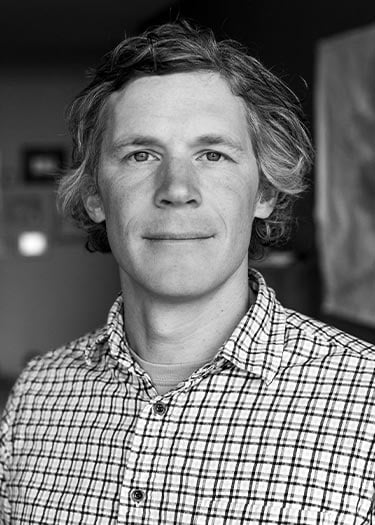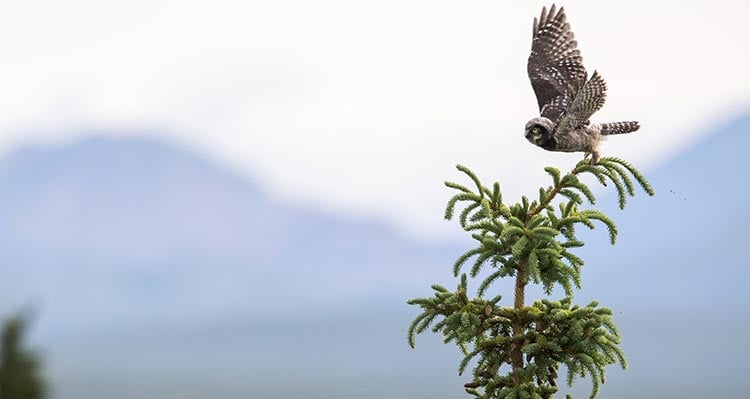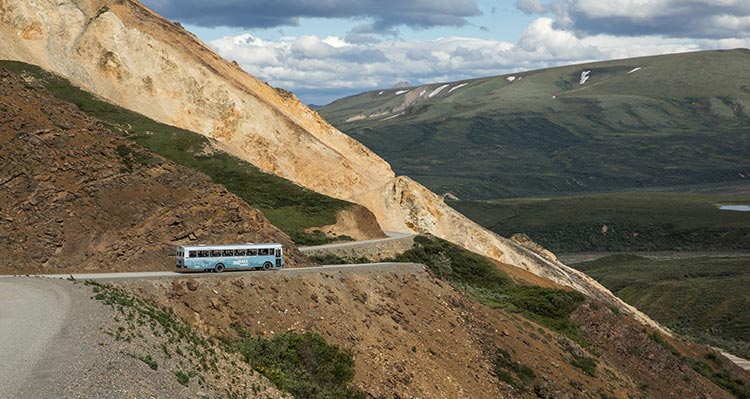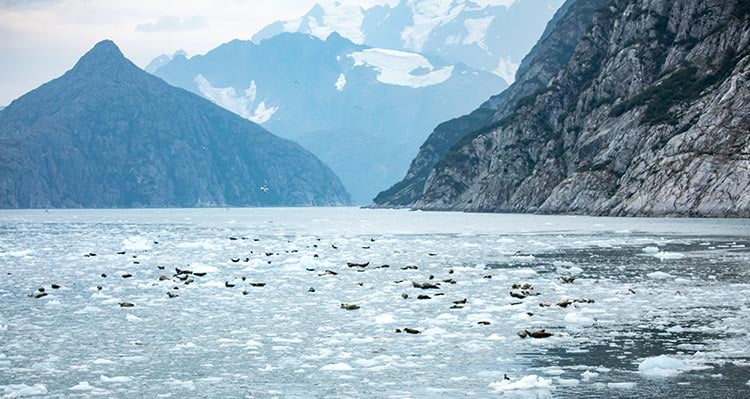Anyone planning a trip to an epic place—think Denali, Banff and Jasper or Glacier Park—is surely thinking about taking some equally epic photographs. And in places so renowned for their natural beauty, it can be an exciting challenge to shoot creatively. We caught up with Alaskan photographer Nathaniel Wilder for some tips on taking amazing landscape photos in wild places.
Born, raised and based in Anchorage, Nathaniel's professional photography ranges from commercial work to editorial projects. We asked him for some help as we prepare for a summer exploring the amazing landscapes of Alaska (and elsewhere!). It's a great refresher on the basics and some inspiration as well.
It's nice to have layers in a photograph—a compelling foreground accompanied by a beautiful backdrop. For example, if you see a gorgeous mountain you'd like to photograph, can you move to put something interesting into the foreground? Is there a lone tree on a hillside? What can give the photo more depth?
Also, it's really important to remove distracting elements. Is there a road in the photo that is not part of what you are trying to feature? Is there a telephone pole, electrical wire or anything else that doesn't contribute to the image? Find a way to move to get them out of the frame.

Don't always shoot straight on. Get high, get low. Shoot from different angles to get different perspectives. Part of the beauty of digital photography is that you can shoot multiple images and sort through them later to find the frame that is best. So get creative and look beyond the first angle that drew you to a scene and photograph it as many ways as you can!
And I suggest using leading lines where possible to draw the eye into a photograph. You can use a river leading into a scene featuring a mountain or fences leading into a landscape. Train your eye to look for these features.
Natural framing can be a nice way to also draw the eye to a photograph while giving it a foreground element that complements your subject. Even tree branches can serve as a natural frame for an image.

The rule of thirds is a classic. It may be tempting to put your subject in the center of the frame, but it's not very interesting. In general, if you break your scene into three horizontal frames and three vertical frames, put your subject where two of those thirds collide rather than in the center of the middle third.
For example if you have a landscape and a sky and want to feature the landscape more, just include the sky for the top third. The landscape should fill the bottom two thirds of the image. Or, if you are trying to feature the sky, then make that the two top thirds of the frame and the landscape the bottom third. Make sense?
There are different ways to get people to respond emotionally to an image. Light is crucial. Middle of the day summer light is harsh and full of contrast. Avoid totally sunny days unless it's wintertime and the sun is lower. Rich early- or late-day light creates richer tones and color in your images and can evoke more emotion.
Another obvious way is to capture human emotion in a situation. Sharpen your photojournalism skills to look for these moments and be ready to press the shutter when you see them. Look for apex moments: unbridled joy, exhaustion, flashes of pride, pensiveness—all of these, when captured in an image, help the viewer to connect to the photograph.
Another way is to tell the story of something through a series of images. I do this a lot in my work. I use landscape scene-setting photos in conjunction with medium range and closeup images of different elements of a place or of something happening to bring the viewer into a story or experience. It helps them connect with my subject more deeply than can necessarily be done in a single image.

If you're using a smart phone to capture your imagery, make sure you understand all the possible ways to control the imagery. Control your exposure by brightening or darkening the scene before you take it. Some camera phones have aperture control that blurs the background behind your subject. I'm not generally a fan of filters but they are very popular right now and can help to really enhance an image you use. Many of the highly popular images you see on Instagram right now utilize filters for enhancement.
Another way to take more control over your enhancements (rather than relying on a filter to do it) is to download a photo-processing software and learn to use it on your own. I use Snapseed. It has a lot of options in post-production. Just make sure you don't go overboard with the color-correction! You're aiming to enhance a photo so you can retrieve what you saw at the time when you took the photo. Too much saturation, vibrancy or use of sharpening tool just makes your image look unrealistic.
Try to find unique perspectives of popular scenes. Don't just go to the same spot to take the same photo of something everyone else has already taken. If you want to photograph it differently, change your perspective!
Climb a tree, lay on your belly and shoot through blades of grass in the foreground. Put your camera on a tripod and shoot a long exposure at night. Try to capture dramatic light from a storm on your subject. Shoot it from a different location or angle or perspective than other people commonly do. Do some research. Explore Google Earth to find a new place to shoot from that's accessible. Do something different!
My favorite place to shoot is in the Arctic. The light up there is really special. In winter, when there is light, it is low and the colors are deep. In summer, the light is dramatic through the night when the sun doesn't set! Also, nighttime in the Arctic takes on a different vibe than in the day and is a fun time to be out observing wildlife and the landscape.

My favorite time of day to shoot is the 'blue hour' before sunrise and after sunset. I love the dramatic blues of the sky at this time and how everything can take on a bluish tone. I also love low sunlight. It can provide a rim light around subjects (for example someone's hair is glowing when the sun is behind them) and not too much contrast in the scene.
For beginner photographers, there are some great National Geographic books on compositional techniques and storytelling out there. I read through one of these back in 2001 when I was first getting serious about photography and it helped me as I was learning the technical as well as compositional aspects of photography.
Also, I usually enjoy following photographers on Instagram that shoot for National Geographic. Keith Ladzinski is one of my favorite landscape photographers. You can be sure that photographers shooting for National Geographic are not manipulating their landscapes in post-production like you see a lot on Instagram. If it looks fake, it's probably enhanced using Photoshop. Renan Ozturk is another favorite photographer of mine. He takes incredible portraits and captures high mountain environments in beautiful light. Watching others work inspires me.

Nathaniel Wilder is an Anchorage-based editorial and commercial photographer who seeks out stories in wilderness and conservation among other things. Most of his work is in the remotest regions of Alaska. The images in this story were all taken by Nathaniel in collaboration with Pursuit. Follow him on Instagram to see more of his work.